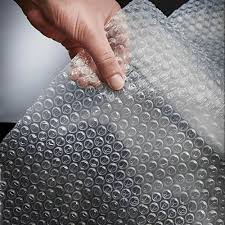Not every great idea starts with a serious brainstorming session. Sometimes, the most impactful creations are born out of silliness, pranks, or a wild “what if?” conversation. History is full of inventions that began as jokes, only to evolve into cultural icons or even billion-dollar industries.
These stories remind us that creativity often thrives where playfulness meets curiosity — and that you never know which quirky thought might be the seed of something game-changing.
Here are seven surprising inventions that prove a joke can change the world.
1. The Slinky
Origin: In 1943, naval engineer Richard James was working on stabilizing sensitive equipment aboard ships. He accidentally knocked a tension spring off his desk, and it “walked” down to the floor. Amused, he brought it home, where his wife Betty suggested they turn it into a children’s toy.

The Joke Factor: It was never meant to be a serious product — just a funny little spring walking down stairs.
Impact: The Slinky has sold hundreds of millions of units worldwide, becoming a toy box staple for generations. It even went to space in a NASA experiment to study zero-gravity motion.
2. Post-It Notes
Origin: In 1968, 3M scientist Spencer Silver developed an adhesive that was, in his own words, “practically useless” because it barely stuck. Years later, colleague Art Fry, tired of losing his place in his choir hymnal, used the adhesive to make removable bookmarks.

The Joke Factor: A “failed glue” was hardly the stuff of corporate glory. People at 3M originally laughed at the idea of a low-tack adhesive product.
Impact: Post-It Notes are now essential office supplies, used globally for brainstorming, reminders, and even art installations.
3. The Super Soaker
Origin: In 1982, NASA engineer Lonnie Johnson was tinkering with a heat pump prototype when he accidentally shot a stream of water across his bathroom. He realized it could make a fantastic toy.

The Joke Factor: Imagine telling your colleagues at NASA you were leaving to make a giant squirt gun. It sounded like a career-ending joke.
Impact: The Super Soaker became one of the best-selling toys of all time, earning Johnson millions and inspiring countless summer battles.
4. The Internet Meme
Origin: While the concept of memes predates the internet, early online image macros, GIFs, and viral jokes were created purely for entertainment. No one thought they’d have any serious cultural value.
The Joke Factor: Memes were once dismissed as silly, time-wasting online jokes.
Impact: Today, memes shape online discourse, influence elections, drive marketing campaigns, and have become a powerful form of modern communication.
5. Bubble Wrap
Origin: In 1957, engineers Alfred Fielding and Marc Chavannes tried to make 3D plastic wallpaper. The textured design was amusing but not particularly useful. Later, they realized it could be used as protective packaging material.

The Joke Factor: Decorative “wallpaper” made from sealed air pockets? Sounds like a gag product.
Impact: Bubble wrap revolutionized shipping and packaging, protecting countless fragile items worldwide. It’s also beloved for its stress-relieving pop factor.
6. The Frisbee
Origin: In the 1940s, college students in New England started tossing around empty pie tins from the Frisbie Pie Company as a game.
The Joke Factor: Throwing pie tins at each other was literally a joke to pass the time between classes.
Impact: Wham-O turned the idea into the plastic “Frisbee” in 1957, launching an entire sport and leisure industry that includes Ultimate Frisbee and disc golf.
7. Laughing Gas for Fun (Then Medicine)
Origin: Nitrous oxide was first synthesized in 1772 by chemist Joseph Priestley, but it wasn’t until the early 1800s that it became popular at parties for its euphoric effects. People laughed, stumbled, and acted silly — earning it the nickname “laughing gas.”
The Joke Factor: It was a party trick long before it had any serious use.
Impact: Dentists later discovered its anesthetic properties, transforming it into a vital tool for painless surgeries and dental work.
What These Stories Teach Us
- Play fuels innovation. Approaching problems with curiosity and humor can lead to unexpected breakthroughs.
- Failure isn’t final. Many of these products came from “failed” experiments.
- Stay open-minded. Even the most ridiculous ideas can become serious successes if given a chance.
From Joke to Genius: The Common Thread
While the inventions on this list are wildly different — from toys to medical tools — they share a few common traits:
- They all came from moments of curiosity or accident.
- They were initially dismissed or laughed at.
- Someone saw potential where others saw nonsense.
In other words, the difference between a joke and a world-changing invention is often just persistence and vision.
Final Thoughts
The next time a wild idea pops into your head, resist the urge to dismiss it as “just a joke.” Play with it. Share it. Experiment. History proves that some of the silliest concepts can change the way we live, work, and play.
After all, somewhere out there, another “failed glue” or “walking spring” is waiting to become the next big thing.





